Native Sicilian Guisi Murabito, born at the foot of Mount Etna, spent many years in various fields including translation, government, and molecular biology before realizing her passion and inspiration rest in sharing with others the beauty and splendor of the Aeolian Islands. Located off the northern coast of Sicily, the seven islands all have the same volcanic origin, though each possesses its own special and unique identity.
In 2016 Guisi founded Walking Eolie & Sicily, which enables people from around the world to experience the culture of the region through guided walking tours focusing on food and wine. It is in this way she is able to share with others the "peaceful environment, divine light, immense soul, [and] authentic smells and tastes" she so loves about her homeland.
Grape Collective talks with Guisi about the diversity of Etna and the experience of living so close to an active volcano.
Guisi, tell us a little bit about your background and your family lemon farm.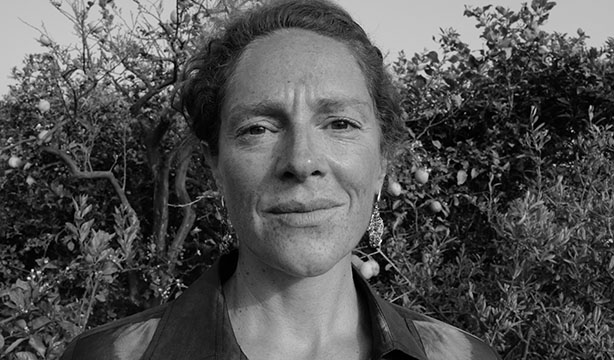 Everything started at the lemon farm. When I was a child I used to live here and play here and I also helped the workers harvesting the lemons. And I said, "Wow, this is a big job, a great business." And I learned all the tricky things of the business.
Everything started at the lemon farm. When I was a child I used to live here and play here and I also helped the workers harvesting the lemons. And I said, "Wow, this is a big job, a great business." And I learned all the tricky things of the business.
(Photo: Guisi Murabito)
Then I went to college and studied and went to Rome to become an interpreter and translator. And when I came back, I worked with the languages and met people from all over the world and worked with many cultures in the world.
I became a molecular biologist, too. Went to work with my family and then I said, "Okay, I give up." And I did the guide. I qualified as a tour guide and a tourist consultant and I'm doing this for 10 years. It seems three lives in one, but still, it's my life.
And I'm back to the lemon farm, where I help the soil and the land of Sicily stay alive, and be proud for our Sicilians and also honored to share with guests from all over the world how for centuries, how Sicilians have done with many civilizations coming from all over the world, trying to conquer, trying to stay, trying to have a house here. When I meet people that travel to Sicily, I ask, "Why Sicily?" Even if they've traveled throughout the world they say, "Here, I feel home." And I know sometimes they buy a house here. And there is such pride that all Sicilians must feel honored.
And, Guisi, in many wine regions, you have monocultures. You have rows and rows of the same type of wine grapes. Etna's very different. You have such a diversity of plant life and a diversity of fruits and vegetables. Talk a little bit about this wonderful diversity that you have here.
The diversity of cultivations is bound to the different composition of the soil that encloses all the minerals from Mount Etna and the salt from the sea and creates the perfect environment for different kinds of grapes to grow, different kinds of fruits to grow, the wheat, the ancient Sicilian wheat that still today can offer a great diversity of breads and flour to make so many food products.
And this is thanks to also the temperature that here respects the seasons. From winter, to autumn, to spring, to summer, we still experience that these are the important steps in the life of cultivations. And so, it's never extreme, but it goes through a mild process and helps all the different grapes and vegetables and fruits to grow peacefully.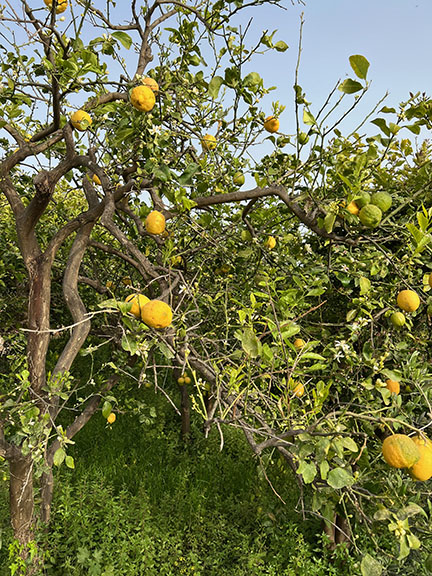 Talk specifically about some of the wonderful vegetables and fruits that have this unique personality.
Talk specifically about some of the wonderful vegetables and fruits that have this unique personality.
I think the vegetable that represents Sicily is the tomato. Tomato can express the minerality. The tomato plant, you water when it's very small for one week, 10 days at most, and then you leave it by itself, because the roots have to struggle and find the water underneath. And what water do they find? The water coming from Mount Etna, from the snow that melted after the winter that feeds the roots of all the vegetables, like the tomato, the zucchini, the eggplant. And then when you fry an eggplant, you don't need to add salt, you just need a good olive oil and then the flavor, it stands in it already, thanks to the water and the air that these vegetables grow in.
And perhaps expand on the wonderful fruits that you have here on Etna.
Etna offers a variety of fruits. The main fruit is apple. The Etna apples are so tiny, so irregular, that you wouldn't pay a penny for that, but then you bite into it and you feel like, wow, this is the volcano. It's so sweet. And at the same time, it's so good to make a cake. Also, it's very healthy, because the minerals that go inside the flesh are very healthy for you.
Pistachio is something very specific of western Etna, and to find Bronte has become the hub for pistachio dealing throughout, I think, now the world. They get pistachios from Turkey, pistachios from Tunisia, pistachios from California, and they still remain connoisseurs of pistachios, and they can distribute and they can select the best of the pistachio varieties. Of course, if you want pistachios from Bronte, you cannot miss visiting Bronte and taste arancino there, with the pistachio, the proper pistachio cream or the pistachio pesto or their pistachio filling for everything.
Lemons, they recently got an appellation, the IGP appellation because it is a specific Etna lemon belonging to a specific area of Etna that is embraced by two breezes. The one blowing from Etna, which brings the minerals erupting from the volcano, either the volcano is erupting or simply smoking water vapor or sulfur or ashes, and the breeze from the Ionian Sea that brings the iodine. So this melding of breezes creates the perfect mix to feed the skin and the leaves of the lemons and release that acidity that the food industry and the palate then are experiencing and researching.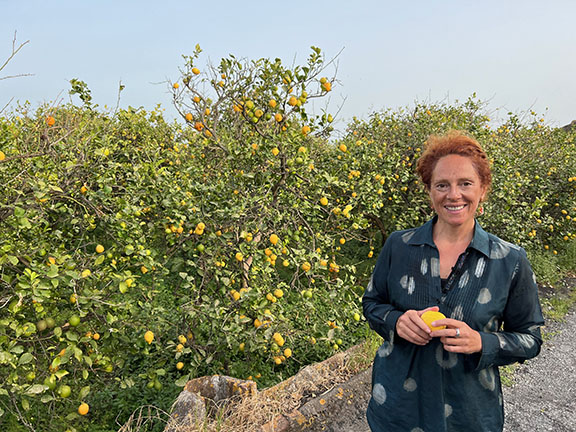 Oranges have obtained big support in the past by university, by research. And they have improved a lot in the market. The presence in the market is racing all over the world. They have been exported. Now they are exported in China, in Japan. They have elongated the shelf life, and they also have created varieties that have a longer shelf life. And they can be harvested for a longer time of the year to guarantee the presence of Sicilian oranges into shelf lives in markets that require a longer presence of a product they select. And this, thanks to all the teamwork of growers and agronomists of the university.
Oranges have obtained big support in the past by university, by research. And they have improved a lot in the market. The presence in the market is racing all over the world. They have been exported. Now they are exported in China, in Japan. They have elongated the shelf life, and they also have created varieties that have a longer shelf life. And they can be harvested for a longer time of the year to guarantee the presence of Sicilian oranges into shelf lives in markets that require a longer presence of a product they select. And this, thanks to all the teamwork of growers and agronomists of the university.
The diversity is also related to all the influences that we have experienced in so many years of invasions and sharing of different ideas and opinions arriving from Spain, from France, from northern Italy as well. We were so separated from northern Italy but then after the unification of the country, we started understanding there was Venice, there was Tuscany. And, these people also found Sicily, such a land to explore, a land to discover, and a land to be part of the wine world, the agriculture world, giving an added value to what is made in Italy.
Etna has this wonderful diversity of terroir. How does this impact the creation of such unique wines?
Etna has developed unique wines also thanks to the people who takes care of the grapes and the properties. So, I think, every wine, the grape can change every 100 meters of the grown land. And this is amazing because you really experience that, and especially, by the personality of the winemaker, of the owner, of the interpreter of the grape variety and the land. I love wines from northern Etna, as well as southern Etna, southeast. The soil gives characteristics, either the sweetness or the acidity, to the blend that the winemaker is making out of the grapes available and the owner saying, "Yes, this is good."
And it's come quite a long way in the last 15 years, hasn't it? The quality levels have really increased.
The quality level has increased because the winemakers have improved their knowledge. Thanks to the example of people coming from the north. And then the Sicilians have learned and studied and put their touch into that interpretation of the soil they've grown into. And thanks to the knowledge and culture, you can make the best with the tradition and the technology combined in the right balance.
The quality has also improved because the audience has listened, and the audience has appreciated, and they have recognized the efforts made in the winemaking process.
Talk a little bit about the volcano itself. How did it get here?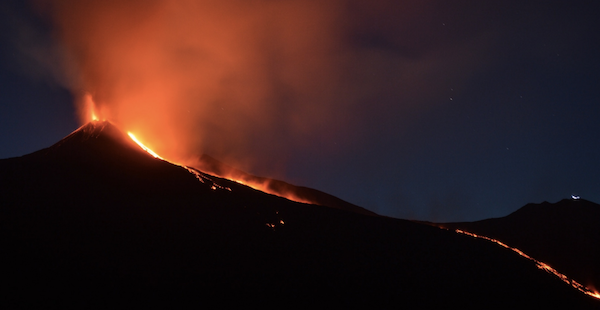 The volcano got here from the sea level. We imagine something bursting out at the center of Sicily and then lava overflowing up to the sea. But no, it was the other way around. And this happened with Aci Trezza, Aci Castello with the bumping of the Faraglioni, the big rock that stayed there, linked to the legend of Polyphemus. But, there was first the bubbling and then many craters opened at different levels. And they created all the lava valleys up the summit area that today has five active craters, but that is only 60,000 years old.
The volcano got here from the sea level. We imagine something bursting out at the center of Sicily and then lava overflowing up to the sea. But no, it was the other way around. And this happened with Aci Trezza, Aci Castello with the bumping of the Faraglioni, the big rock that stayed there, linked to the legend of Polyphemus. But, there was first the bubbling and then many craters opened at different levels. And they created all the lava valleys up the summit area that today has five active craters, but that is only 60,000 years old.
And then 3,000 feet collapsed, 14,000 years, and created the Bove Valley and all these transformations have also transformed the land and created all the growing soil that has been terraced with such big work, a big job, but also the depression that could allow life to grow at the feet of Mount Etna.
It's very active. Something like 70 eruptions last year.
It's very active and the severe character of the eruptions is reducing. It's a big performance. And the volcanologists are constantly monitoring the releases of gases, the changes of temperature, the distance of the lava from the surface. The only thing they really cannot predict is the earthquakes. And this is the only fear we have. But you know, living with a fear helps you realize you are a human being and puts you in the right position, very tiny, compared to such a big giant like our Lady Etna.
What are some of the challenges of living on a volcano?
Besides the performance of the volcano, we have to deal with the constant eruptions of ashes, of lava, but especially the ashes that have covered us 25 times in the last 15 months. And this means cleaning the roof. This means cleaning the road. But also, for the plants, it is not good because the ash, which is black, stays on the leaves and then they get too much heat from the sun rays, and this is burning the vegetation. So, it's a challenge.
It's also a challenge for the snow, because it's warm and easy, and then in one night, it's full of snow. You cannot go up. You cannot go down. And you may get stuck in some mountain towns and you cannot go down, or the earthquakes, of course, that can affect your life forever.
There's this tension between what the volcano gives you in terms of these wonderful soils and also the difficulty with the ashes and the lava flows and the earthquakes. 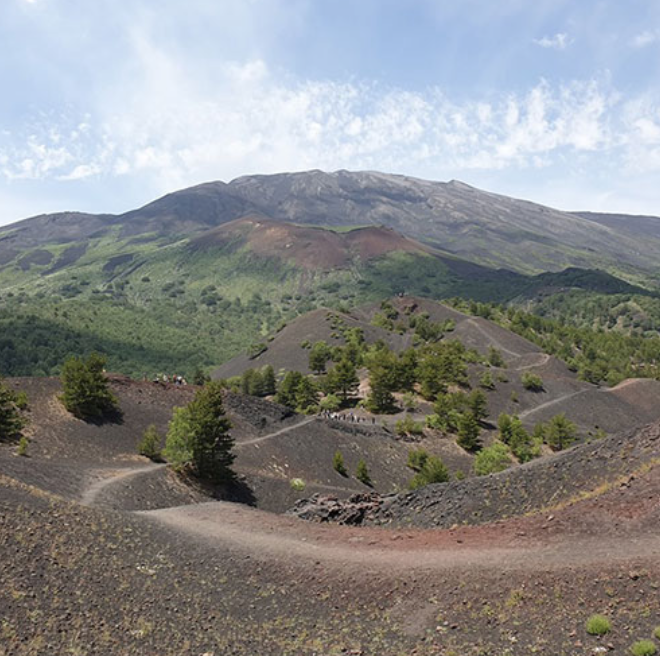 Living at the foot of a volcano, around the volcano, it's always an amazing way of living because you think you are under protection, but also under a spell. And this combination of good feelings and bad feelings, good things and bad things puts you always into a search for balance.
Living at the foot of a volcano, around the volcano, it's always an amazing way of living because you think you are under protection, but also under a spell. And this combination of good feelings and bad feelings, good things and bad things puts you always into a search for balance.
And this is a good aspect of the tension between Mount Etna and the worker. And it's not putting both at the same level, but recognizing the difference between a mountain and an active volcano and a worker, working in the soil. And it's a way to say always, thank you, because, frustration can only help you improve and can help you mature. And also, saying thank you helps life become sweeter.
Sicily and Etna specifically have had so many different cultures impact it through the conquests of the Greeks, the Romans and others. How have all these invaders impacted the culture that we have today, here on Etna?
Eastern Sicily experienced the Greek invasion at the beginning that gave us all the knowledge and the culture we have in our ground. And the Greeks have taught us about the philosophy, the arts, the architecture, the creativity. And then the Romans came and they introduced the lamb. The use of the lamb that we eat is completely Roman linked. And, then the Normans with the castles, all the castles we have were built and wanted by Frederick II.
And then the Spanish, the French. The Spanish introduced the ceramics, the arts of painting, and the French, the base of our cuisine. All the longer preparations that we have today in our Sunday menus, we owe that to the French, very in contrast the presence of the French and Sicily. The French were the only population that we kicked off the island in 1282. Because they were too much, too much. We don't like too much. Until the guests stay, right, we love everybody? And this has influenced, of course, our everyday life, the way we talk, the way we organize the open air markets, the way we cook, the way we grow. I think many processes of growing, like the grafting, for example, was inherited by the Romans. And the Greeks introduced the sour oranges as trees for shade, but then, they grafted. And the Romans inherited that grafting to create the oranges we enjoy today.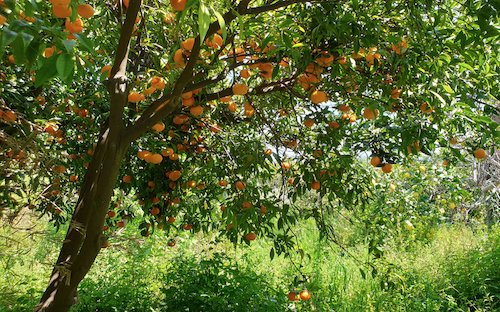 So all the civilizations we bring to the table, you can see. We couldn't speak all the languages for every guest we were hosting, but the only language we could talk was that of food. That's why when you are invited into a Sicilian table, that is for sharing what we have. The best we have to tell you, you are welcome.
So all the civilizations we bring to the table, you can see. We couldn't speak all the languages for every guest we were hosting, but the only language we could talk was that of food. That's why when you are invited into a Sicilian table, that is for sharing what we have. The best we have to tell you, you are welcome.
How do you see the future for Etna?
I see a great future for Etna, because I think the world is recognizing the quality of the region. And everything is combined into a teamwork, everything is a combination of efforts, everything that is made together, can reach higher levels. So, people are looking for Sicilian wines first, but then now Etna wines, recognizing Etna as a region. If producers and growers keep that in mind, they can go higher. They can do bigger things. And, most of them are working in that direction. So they are combining efforts and ideas and sharing success. So pain and success and this is also the dualism of working with the soil. So we are learning.
Photos by Grape Collective and courtesy of Walking Eolie & Sicily














